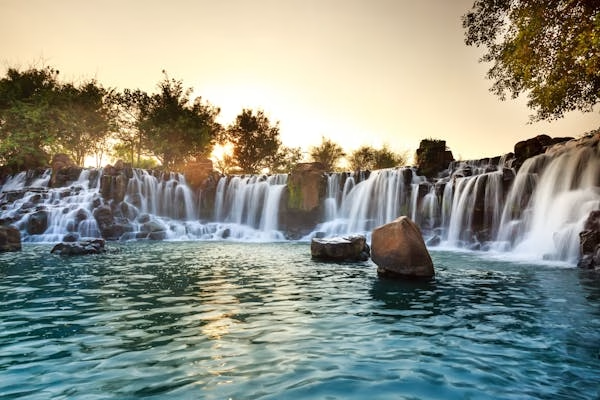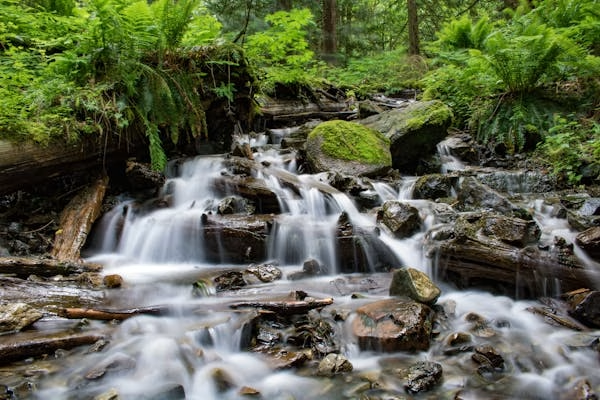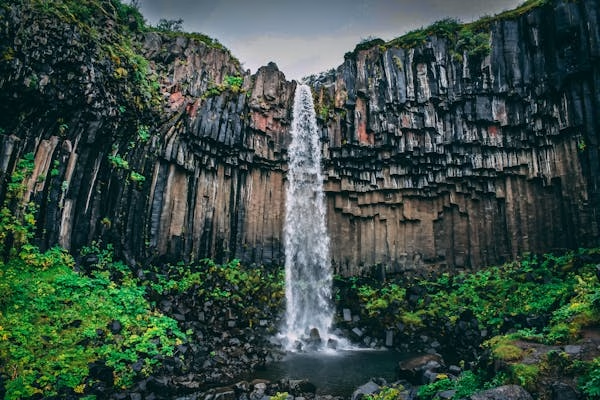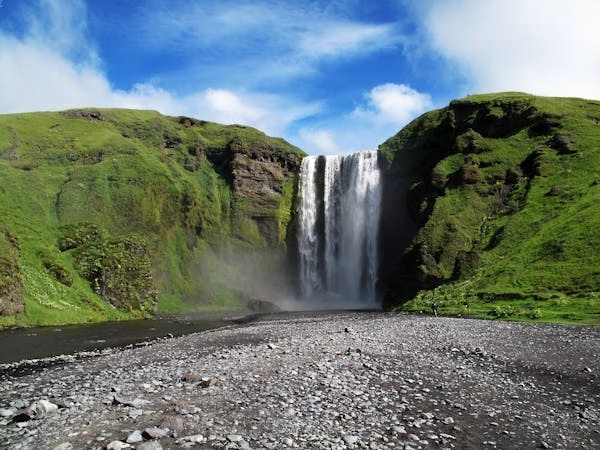Moola Chotok: Pakistan’s Hidden Oasis of Waterfalls and Wilderness

In the vast and often misunderstood landscapes of Balochistan, where arid deserts stretch endlessly and rugged mountains rise sharply against the sky, lies a hidden treasure that defies every expectation—Moola Chotok. This secret sanctuary, veiled by towering cliffs and nourished by a life-giving river, offers an oasis of water and greenery unlike any other in the region. For travelers seeking the extraordinary, an escape from the crowded tourist trails, or simply a moment of peace in nature’s embrace, Moola Chotok promises a rare and unforgettable experience.
I first heard about Moola Chotok during a trip to Balochistan’s provincial capital, Quetta. Locals spoke in hushed tones about this enchanting valley where water flows abundantly, cascading down cliffs to form magnificent waterfalls and crystal-clear pools. It sounded almost mythical—a lush paradise tucked away in one of Pakistan’s driest provinces. Intrigued and hungry for discovery, I decided to venture beyond the usual paths, to explore this hidden gem myself.
What I found was beyond anything I had imagined. The journey itself was an adventure—a rugged drive along winding, rocky trails, flanked by dramatic canyon walls. The air grew cooler, and the scent of wet earth and wildflowers filled the senses. Then, as if emerging from a dream, the waterfalls appeared: powerful torrents tumbling into shimmering pools surrounded by vibrant greenery. The sound of water crashing against stone was hypnotic, a natural symphony that seemed to cleanse not just the body but the spirit.
Moola Chotok is more than just a picturesque destination; it’s a testament to nature’s resilience and beauty in unexpected places. The valley is fed by the perennial Moola River, whose waters carve through the arid landscape to create this oasis. It is one of the few spots in Balochistan where water flows year-round, supporting diverse flora and fauna that thrive amid the rocky terrain. For visitors, this offers a chance to witness an extraordinary ecosystem that contrasts sharply with the surrounding desert.
But Moola Chotok is not simply a natural marvel—it is also steeped in local culture and history. The name ‘Moola’ comes from a nearby village, while ‘Chotok’ means ‘falling water’ in the local Brahui and Balochi languages. The region carries tales of ancient peoples and saints, legends passed down through generations that imbue the landscape with a mystical aura. Visiting here feels like stepping back in time, connecting with traditions that remain deeply rooted in the land.
For Pakistanis and international travelers alike, Moola Chotok offers something special. Unlike the well-trodden tourist destinations of the north—Hunza, Skardu, Swat—this place remains relatively untouched, preserving its raw beauty and sense of discovery. It calls to the adventurous, the nature lover, and the seeker of solitude. Whether you’re a photographer eager to capture the stunning contrasts of blue waterfalls against ochre cliffs, a hiker ready to explore caves and hidden trails, or someone simply longing to disconnect and breathe fresh mountain air, Moola Chotok has a unique appeal.
Traveling here requires effort and preparation, which is part of the charm. The roads are rugged, accessible mostly by 4×4 vehicles, and the site lacks formal tourist infrastructure. This means you must be self-reliant—packing camping gear, food, water, and first aid. It also means fewer crowds, a more authentic experience, and the thrill of wilderness adventure. For me, this combination made the visit even more rewarding. The absence of commercial development felt like a gift, allowing the valley’s natural rhythms and sounds to take center stage.
Timing your visit is important. Balochistan’s summers can be harsh, with temperatures soaring above 45°C (113°F), making travel difficult and potentially unsafe. The best months to explore Moola Chotok are from October to March, when the weather is cooler and more comfortable for hiking and camping. Spring brings wildflowers, and winter nights are crisp and clear, perfect for stargazing beneath a canopy of stars far from city lights.
Moola Chotok also holds potential for sustainable tourism that respects the environment and local communities. The nearby villagers live simple lives, deeply connected to the land, and any tourism development must prioritize their welfare and cultural heritage. Responsible travel here means treading lightly, honoring traditions, and leaving no trace. It is an opportunity to foster understanding and appreciation for one of Pakistan’s lesser-known but equally precious landscapes.
Reflecting on my experience, I realize that Moola Chotok challenged my perceptions—not just of Balochistan, but of what adventure travel can mean. It reminded me that beauty is not always found in popular destinations or luxury resorts; sometimes, it waits quietly in remote corners, accessible only to those willing to seek it out with respect and curiosity. It taught me patience during the journey and gratitude upon arrival, two lessons that often go hand in hand with meaningful travel.
As more travelers discover Moola Chotok, it is crucial that we share stories that inspire exploration while encouraging care for the environment and local culture. This hidden waterfall valley offers not just breathtaking scenery, but a chance to connect deeply with Pakistan’s diverse landscapes and peoples. Whether you’re visiting from within Pakistan or coming from abroad, Moola Chotok invites you to step off the beaten path and experience the magic of a place where water flows in the desert and adventure awaits at every turn.
If you’re ready for a journey that combines natural splendor, cultural richness, and the thrill of discovery, Moola Chotok should be at the top of your travel list. Prepare yourself for an unforgettable experience—one that will leave you with memories etched in your heart and a renewed appreciation for the hidden wonders of Pakistan.
Table of Contents

Unique Fact: A Verdant Oasis in an Arid Landscape
Contrary to Balochistan’s predominantly dry terrain, Moola Chotok boasts a perennial river, the Moola River, which nourishes the valley year-round. This continuous water flow supports a diverse ecosystem, creating a stark contrast to the surrounding deserts and mountains.
Key Features and Attractions
1. Chotok Waterfall
The centerpiece of Moola Chotok is the majestic Chotok Waterfall. Surrounded by towering cliffs, the waterfall plunges into a natural pool, offering a refreshing retreat for visitors. The sound of cascading water combined with the lush surroundings creates a tranquil atmosphere perfect for relaxation and reflection.
2. Chota Chotok
A smaller yet equally enchanting waterfall, Chota Chotok is located nearby. This area features a series of smaller falls and wading pools, ideal for leisurely swims and picnics amidst verdant landscapes.zameen.com
3. Moola River
Flowing through the valley, the Moola River is the lifeblood of the region. Its clear waters support local agriculture and provide a habitat for various aquatic species. The river’s banks are lined with diverse flora, adding to the area’s natural beauty.
4. Caves and Rock Formations
The surrounding cliffs and mountains are dotted with intriguing caves and unique rock formations. Exploring these natural structures offers insight into the geological history of the region and provides opportunities for adventure and discovery.

Reasons to Visit
Adventure and Exploration: The journey to Moola Chotok involves off-road driving and trekking, appealing to thrill-seekers.
Natural Beauty: The juxtaposition of waterfalls, greenery, and rugged cliffs offers breathtaking scenery.
Cultural Experience: Engage with local communities and learn about the rich history and legends associated with the region.
Tranquility: The remote location ensures a peaceful environment, free from the hustle and bustle of city life.
Best Time to Visit
The optimal time to visit Moola Chotok is during the cooler months, from October to March. During this period, the weather is pleasant, making it ideal for trekking, camping, and exploring the area. The summer months can be extremely hot, with temperatures soaring above 48°C (118°F), making travel and outdoor activities challenging.
How to Get There
From Karachi:
Karachi to Khuzdar: Embark on an 8 to 10-hour drive to Khuzdar via the M-8 Motorway.
Khuzdar to Moola Chotok: From Khuzdar, hire a 4×4 vehicle to navigate the rugged terrain leading to Moola Chotok, approximately 105 kilometers northeast.
From Quetta:
Quetta to Khuzdar: Travel to Khuzdar via the Quetta-Karachi Highway.
Khuzdar to Moola Chotok: Follow the same route as above.
Note: The final stretch involves off-road driving; therefore, a 4×4 vehicle is essential. It’s advisable to travel with someone experienced in off-road navigation or hire a local guide.
Major Activities
1. Camping
Set up camp near the waterfalls and enjoy the serene environment under a starlit sky. The absence of light pollution makes it an excellent spot for stargazing.
2. Swimming
Take a refreshing dip in the natural pools formed by the waterfalls. The clear, cool waters provide relief from the heat and an opportunity to connect with nature.
3. Trekking
Explore the surrounding trails and discover hidden caves and rock formations. The terrain offers varying levels of difficulty, catering to both novice and experienced trekkers.
4. Photography
Capture the stunning landscapes, waterfalls, and unique geological features. The area’s natural beauty provides ample opportunities for both amateur and professional photographers.
5. Bird Watching
The diverse ecosystem supports various bird species, making it a haven for bird watchers. Bring binoculars and a field guide to enhance the experience.
Additional Tips and Safety
Travel in Groups: Due to the remote location and challenging terrain, it’s advisable to travel with a group or guided tour.
Prepare Adequately: Carry sufficient food, water, camping gear, and first aid supplies, as there are no facilities in the area.
Respect Local Customs: Be mindful of local traditions and seek permission before photographing residents.
Check Weather Conditions: Avoid visiting during the monsoon season due to the risk of flash floods.
Vehicle Maintenance: Ensure your vehicle is in good condition, with spare tires and necessary tools, as the terrain can be unforgiving.

Nearby Attractions
1. Khuzdar City
Explore the historical and cultural sights of Khuzdar. The city offers markets, local cuisine, and a glimpse into the daily lives of Balochistan’s residents
2. Hingol National Park
A bit further afield, this park is known for its unique landscapes and wildlife. It’s home to the famous Princess of Hope rock formation and the Hingol River.
3. Pir Chattal Noorani Gandhawa
A sacred site known for its historical significance and natural beauty. Visitors often come to pay respects and enjoy the tranquil surroundings.
Cultural Significance
The name ‘Moola’ originates from a nearby village, while ‘Chotok’ translates to ‘falling water’ in the local Brahui and Balochi dialects. This region is steeped in history, with legends of saints and ancient civilizations adding a mystical charm to the landscape. Engaging with local communities provides insight into their traditions, stories, and way of life.
Environmental Considerations
As tourism to Moola Chotok increases, it’s crucial to practice responsible travel:
Leave No Trace: Carry out all trash and avoid disturbing the natural environment.
Use Biodegradable Products: Opt for eco-friendly toiletries and cleaning supplies.
Support Local Economy: Hire local guides and purchase goods from local vendors to contribute to the community.
Conserve Water: Use water sparingly and avoid polluting natural water sources.
I remember the first time I heard about Moola Chotok. A friend of mine, an experienced traveler who had roamed across Pakistan’s north and south, spoke of it with a quiet reverence — as if he had stumbled upon a secret meant only for those who dared to look beyond the map. It wasn’t a place on glossy travel brochures or mainstream Instagram feeds. But it stirred something in me — a curiosity, a longing to discover something real, raw, and untouched. When I finally stood in front of the cascading waterfall, surrounded by towering cliffs and the rhythmic hum of the Moola River, I realized he hadn’t exaggerated. If anything, words had failed to capture what this place truly felt like.
The Takeaway
Traveling in Pakistan is both exciting and accessible because to its varied transportation system. Every type of traveler has an alternative, from the convenience of ride-hailing services to the affordability of buses and trains.
Metro busses, Careem, and Uber are the most convenient means of transportation for brief city excursions. Pakistan’s picturesque train routes and opulent bus services offer comfortable and reasonably priced long-distance travel. The quickest option to travel long distances is still by domestic flight, particularly when traveling to far-flung northern locations.
Are you prepared to travel to Pakistan? Plan your vacation now to take advantage of the amazing nation’s transportation infrastructure!
Explore carefully planned tours to see the best of this fascinating nation. Please get in touch if you would need more travel advice; we are happy to assist you in organizing your upcoming journey! Additionally, by completing this form, you can personalize your journey.
FAQs – Everything You Need to Know
1. Where is Moola Chotok located in Pakistan?
Moola Chotok is located in the Khuzdar District of Balochistan, Pakistan. It’s hidden deep within the Moola Valley, about 105 kilometers from Khuzdar city and around 550 kilometers from Karachi. This offbeat location is known for its natural waterfalls, rocky canyons, and lush green pockets amidst an arid region.
2. Is it safe to travel to Moola Chotok?
Generally, it is safe, but travelers should exercise caution due to the remote nature of the area. It’s advisable to travel in a group, hire a trusted local guide, and inform local authorities like Levies or police about your visit. Make sure your vehicle is suitable for off-roading, and always check current security conditions before the trip.
3. What is the best time to visit Moola Chotok?
The best time to visit is from October to March. During these months, the weather remains pleasant, making it ideal for hiking and camping. Summer can be unbearably hot, and the monsoon season may bring flash floods, making travel risky. Always avoid rainy periods to stay safe.
4. How do I get to Moola Chotok from Karachi or Quetta?
From Karachi, it takes approximately 10 to 12 hours by car, following the route through Winder and Khuzdar. From Quetta, the journey takes around 8 hours. The last stretch from Khuzdar to Moola Chotok is an unpaved, off-road track, accessible only by 4×4 vehicles. There is no public transport to the site, so private or guided travel is necessary.
5. Do I need permission or a NOC to visit Moola Chotok?
If you’re a foreign tourist, yes—you need a No Objection Certificate (NOC) from the Home Department of Balochistan. Pakistani citizens generally do not need formal permission, but it’s still good practice to inform local authorities in Khuzdar or check with Levies before proceeding.
6. What should I pack for a trip to Moola Chotok?
You should bring plenty of drinking water, food supplies, a first-aid kit, camping gear, extra clothes for both hot days and cool nights, a flashlight, power bank, vehicle repair tools, and additional fuel. Also carry a trash bag to bring back all your garbage, since there are no waste facilities.
7. Are there any accommodations at or near Moola Chotok?
There are no hotels, rest houses, or formal accommodations at the site. Most visitors either camp near the waterfalls or stay overnight in Khuzdar before or after the visit. If you’re planning to camp, be fully self-sufficient or go with a tour group that provides tents and meals.
8. What kind of activities can I do at Moola Chotok?
Moola Chotok is great for nature-based adventures. You can hike through rocky trails, swim in clear freshwater pools, explore caves, and enjoy photography or stargazing at night. Camping is one of the highlights, especially under the open sky, away from urban noise and light.
9. Is there mobile network or internet at Moola Chotok?
No, there is no mobile signal or internet access once you leave Khuzdar. Prepare to be completely off-grid. Inform your family or friends beforehand and do not rely solely on GPS for navigation. It’s best to travel with someone familiar with the terrain or use a downloaded offline map.
10. Can families or female travelers visit Moola Chotok?
Yes, they can, but the journey and environment are rugged. It’s best for adventurous families or female travelers who are experienced with off-road camping. Always go with a reliable group or tour operator, and ensure proper facilities and security measures are in place for your comfort.
11. Are there any tour companies that offer guided trips to Moola Chotok?
Yes, several tour operators based in Karachi, Quetta, and even Islamabad organize group tours to Moola Chotok. These usually include transportation, meals, tents, and local guides. Booking through a tour company is recommended for first-time visitors, especially those unfamiliar with Balochistan’s terrain.

Daniel loves exploring off-the-beaten path destinations and making new friends. Writing blog posts since 2015, Daniel says it helps him to document his travels and cherish them. He loves the fact that what he writes might actually help someone have a better experience in Pakistan and Afghanistan. In his spare time, he loves listening to Tchaikovsky and spend time with his dog Coconut.




